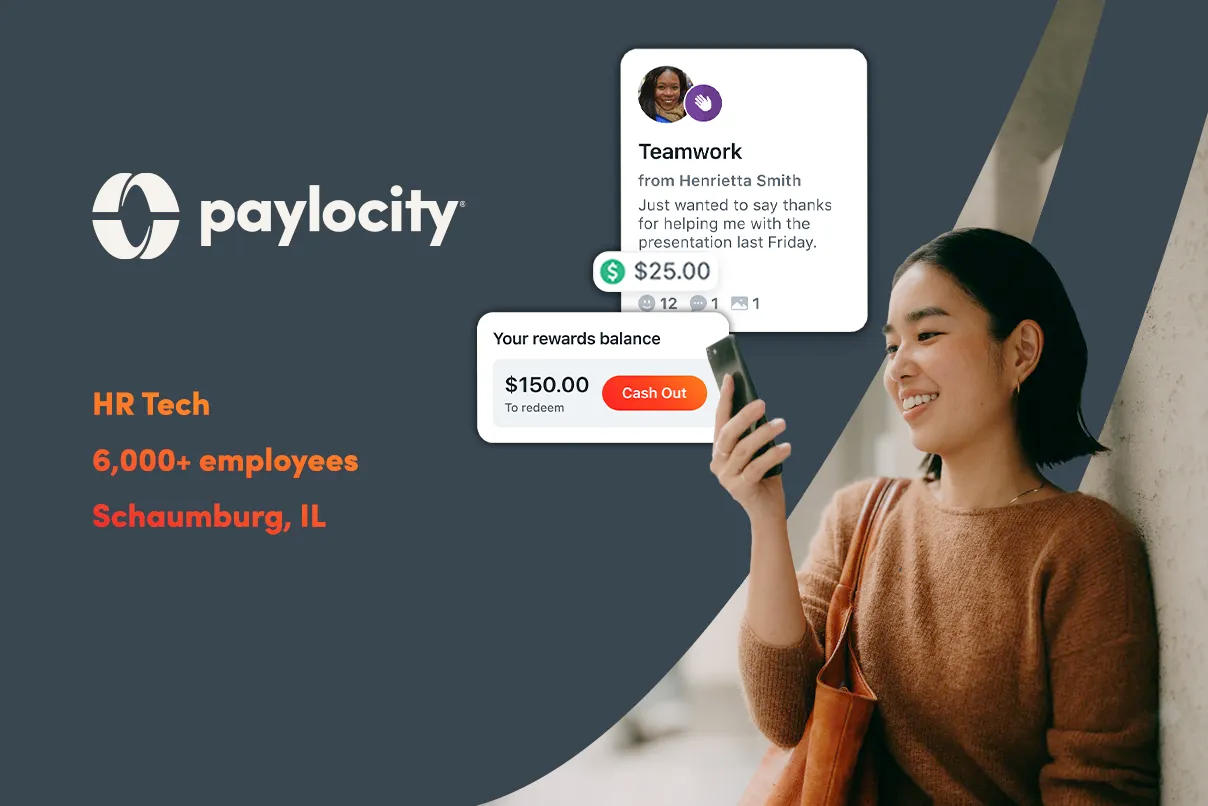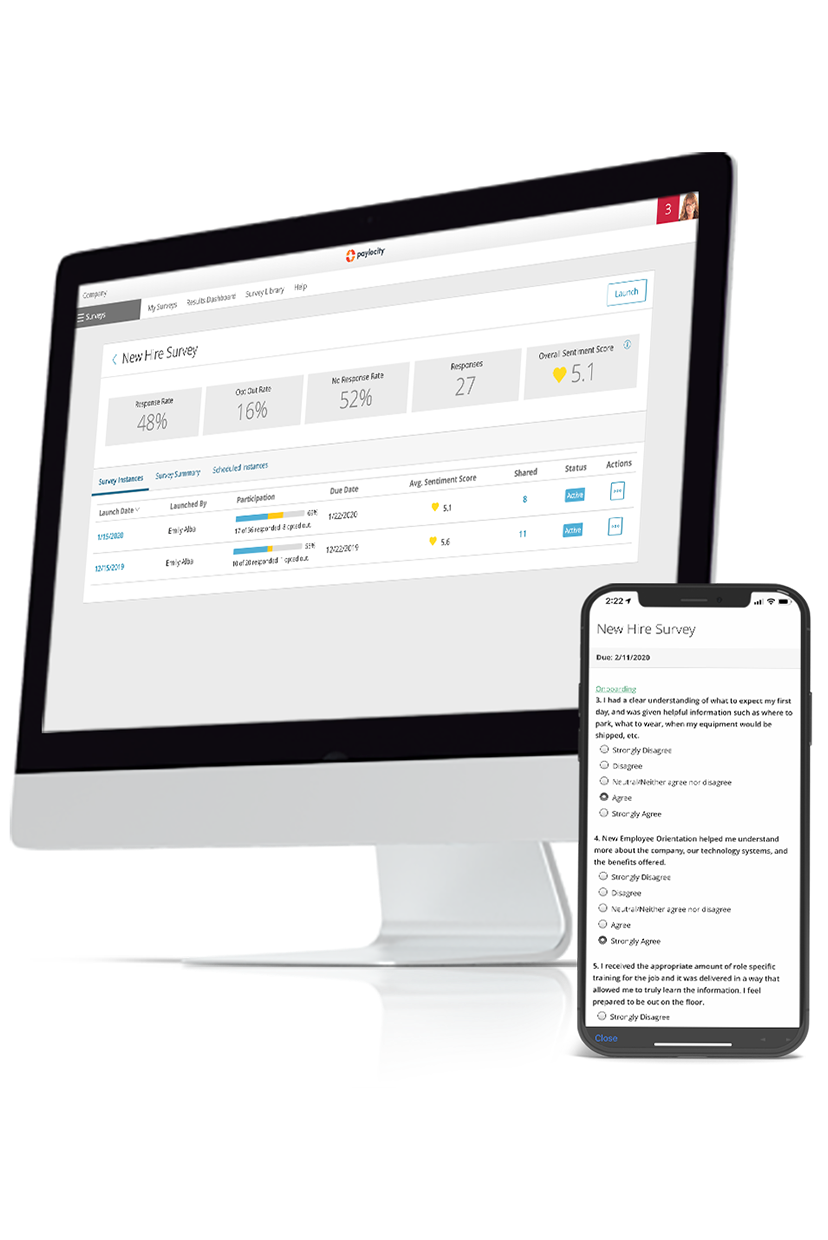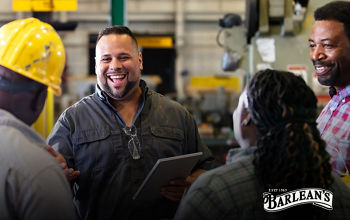resources
6,000 Early Adopters: How Our Employees Co-Create the Future of HR Tech
March 01, 2024

Paylocity is one of the fastest growing publicly traded companies in the HCM space by total revenue growth. Like many organizations on a fast-growth trajectory, we’ve experienced our share of HR pain points. We have an advantage, though. We call it “Drinking Our Own Wine.”
When we see a gap, our instinct is to fix it. Fortunately, we have the expertise to do just that, along with more than 6,000 passionate in-house testers who use our solutions just as our clients would. Throughout our expansion – and the disruptions all companies have faced in the last few years – we’ve had to be intentional about continually reinforcing a people-first culture. So, we developed tools to make that easier.
Paylocity invests more than 15% of annual revenue back into product development each year. Working closely in partnership with our extensive HR team of seasoned experts, our product teams design, test, and refine the HR and payroll tools the company — and our clients — use every day.
One of our newest products, Recognition & Rewards, simplifies giving and receiving recognition and allows employees to redeem real-world rewards, all within Paylocity. It automates recognition for milestones like anniversaries and birthdays and has a rewards program with cash redemption and automatic taxation.
Another new product, Employee Voice, is a comprehensive solution that continuously collects feedback, analyzes and share insights, and recommends actions based on those insights to improve employee engagement and retention.
Here are some of the lessons we learned by implementing Paylocity’s Employee Voice and Recognition & Rewards with our own employees.
Growing and Harvesting
Before we could enjoy the fruits of our labor, we had to ask some big questions.
Do Our Employees Feel Appreciated?
“Recognition is such a key component for showing employees that they’re valued,” explains Jill Morrison, Paylocity’s CHRO. “We know it directly impacts their engagement. It also strengthens teams and cross-functional partnerships.” Too often, she says, recognition is seen as a manager-to-employee transaction. The HR team wondered if we could boost peer-level recognition with a custom badge in Recognition & Rewards to celebrate Employee Appreciation Day, announced and distributed through the Paylocity platform.
In one week, our employees sent each other more than 20,000 “I Appreciate You” badges, compared to an average of just over 800 recognitions during a “normal” week.Missing Data Leaves HR Guessing About Trends
What Else Drives Employee Engagement?
Our people are at the core of everything we do. We strive to better understand what makes our team members happy and motivated to stay. Third-party employee engagement surveys are often cumbersome and require manual analysis. So, we decided to build our own survey instrument, embedded within the Paylocity platform, and share our methodology with our clients.
Paylocity’s data science team used aggregate workforce data to compare engagement survey responses with actual retention data. Through rigorous validation they developed a finely curated question set that’s maximally predictive of engagement and retention — with a minimal number of questions to ensure response rates stay high.
How Do We Respond to Employee Feedback?
Colleen Donahue-Bean, Paylocity’s VP of Talent Management, sees all feedback as a gift. “Some of the best ideas about how to improve your business and culture come from employee feedback, both positive and negative,” she says. “And let’s get real — employees are going to talk to each other or post their opinions online, so why not ask for their feedback up front?”
For Colleen, whose team oversees employee listening and change management, it’s critical not only to collect and analyze feedback continuously, but also be able to act on it at scale.
“Employee Voice is more than a survey tool. It collects feedback in ways that make it easy to share results with leaders. Then it guides you to create a meaningful, manageable number of actions that you can track to show progress over time.”
Colleen Donahue-Bean, VP of Talent Management
Grape Stomping
To launch a company-wide engagement initiative, we put these best practices in place.
Create a Communications Plan
“Transparency is key,” says Cammie Bricker, Director of Change Management and Communications. “If you ask people their opinion but don’t tell them why or what you plan to do with the feedback, that really hurts your credibility.”
Before sending out a large-scale engagement survey, she suggests mapping out a communications plan that sets expectations before, during, and after. “You have to decide in advance how you’ll share results with employees,” she says. “That doesn’t mean you have to share every detail. But it’s important to keep communications open, be willing to take action, and follow through. Show employees that their voices are not only heard but truly valued.”
Get Executive Buy-In
WEven at Paylocity, it’s vital to make sure everyone is on the same page when designing a major employee initiative, including our executive team. Colleen recommends a three-pronged approach:
- Show how employee engagement aligns with your company strategy and key metrics. For example, perhaps you want to drive higher customer satisfaction or reduce talent acquisition costs.
- Share how employee listening supports your talent management strategy. For example, if an engagement survey reveals employees don’t feel supported by their managers, that may be a coaching opportunity.
- Explain how you will use the survey data as a baseline to measure ongoing employee engagement efforts.
Mobilize Managers
In addition to executive buy-in, Paylocity’s HR team also coached people leaders so they would be prepared to support employees throughout the process and — just as important — ready to translate results into meaningful actions. “We’re keeping it very simple to start,” Colleen says. “Identify two or three opportunities to focus on, put some actions in place, share that plan with your team, and monitor results.”
She reminds managers to be patient. “You don’t have to create new ideas and actions every quarter, but you can tweak the initiatives that are in place with the new feedback. It takes time to move the needle on overall happiness, but you will start to see progress if you focus on a few things and do them well.”
Perfecting the Process
With internal benchmarks in place, Paylocity is moving forward together.
Build on Surprises
After such an overwhelming response to the Employee Appreciation program, Paylocity’s HR team decided to keep the custom badge available year-round. “Once we got over the shock of generating 20,000 personal messages in a week, we realized just how well ‘I Appreciate You’ ties into our core values,” says Marisa Pinetti, Senior HR Communications Specialist. “We saw a chance to weave more peer-to peer recognition into our culture on an ongoing basis."
Ready, Set, Launch
When it came time to deploy the full engagement survey through Employee Voice, the HR team was ready to launch with confidence. It was a real time-saver knowing the pre-populated questions were backed by data science, and easy to send the survey to the whole company from the Paylocity platform.
As soon as the survey closed, people leaders with more than five reports had immediate access to their results dashboards. Colleen reports, “This shaved off two weeks of having our internal team filter results and cascade to managers via spreadsheets.”
Build on Strengths
Results from the Employee Voice engagement survey can be automatically segmented and distributed based on supervisory hierarchy, as well as filtered by demographics like tenure. This provides deep insights for leaders and managers while ensuring confidentiality of employee responses. The tool highlights two high-impact engagement drivers so managers can build on what’s already working.
“Look at your strengths first,” Colleen advises. “You don’t want to lose those!” Identify teams or functions that excel in specific areas and share their best practices..
Laser Focus on Low-Hanging Fruit
Employee Voice provides an overall Engagement Index Score and individual favorability scores for nine engagement drivers. Since it’s unlikely any company or team will receive perfect scores across the board, Colleen suggests identifying one or two areas where you can make incremental improvements.
“It’s easier to turn a neutral response into a positive than to completely flip a negative response. Coaching a team to improve communication may be a lighter lift than making a compensation adjustment. Work with leadership to prioritize areas that create shared accountability.”
Colleen Donahue-Bean, VP of Talent Management
Next Steps: Employee Engagement at Paylocity
“You have to commit to the process,” Cammie reiterates. “We allotted three months for senior leaders to discuss results with their direct reports and create action plans, then communicate those plans with departments and teams.”
Going forward, Employee Voice automates quarterly pulse surveys so leadership and the Talent Management team can monitor progress and make adjustments. “Continuous improvement is a virtuous cycle,” Colleen points out. “Putting employees first and being transparent have always been a part of our culture and DNA.”
“Luckily,” she adds, “Paylocity has the best tools to make it easy and make it matter!”

Capture Your Employees' Voices
Your employees want to be a part of creating your company's culture. Make sure they're heard through engaging surveys. Using our questionnaire tool, you can gather invaluable feedback from your entire workforce — remote, hybrid, in-office, contractors, and more. Get the insights you need to make improvements, anticipate any problems, drive strategic decisions, and keep your employees engaged.


